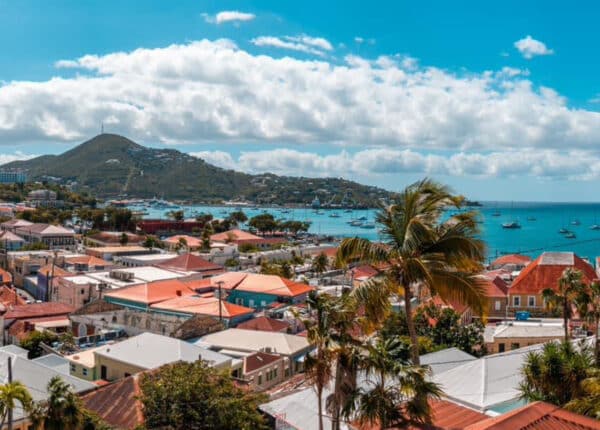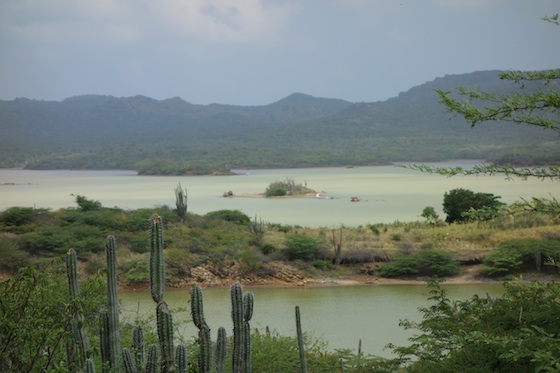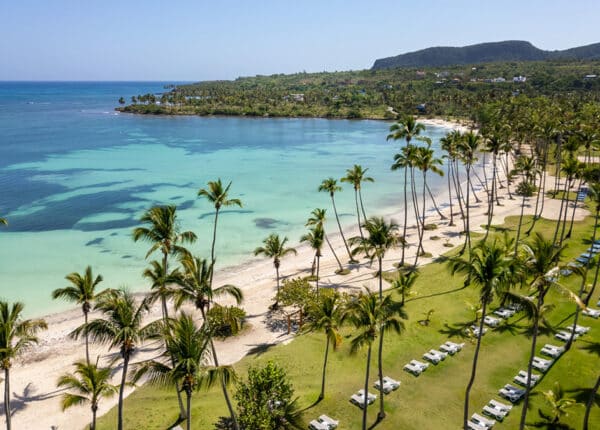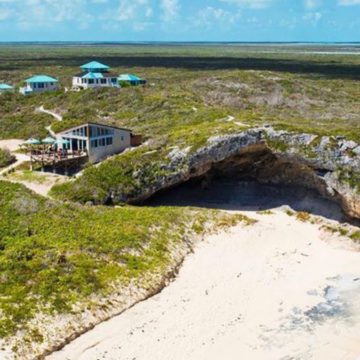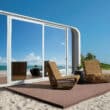Above: Bonaire (CJ Photo)
By Alexander Britell
While Bonaire is one of the smallest destinations in the Caribbean, its tourism sector is one of the most important of any individual country in the region, measured as a percentage of its GDP. But the island has found success not by marketing large-scale resorts, but with a small-scale, engaged tourism product. But how does it intend to grow in an increasingly competitive Caribbean market, especially as a destination whose small size is one of its charms? To learn more, Caribbean Journal talked to Ethsel Pieternella, who began his term as director and COO of the Tourism Corporation Bonaire earlier this year.
What does tourism mean to Bonaire?
Well, if you look at the tourism sector, it is very important in Bonaire. And that’s about 80 percent — 80 percent of everybody that’s working has a tourism-related job. So that is one aspect. So it has a very high priority, both politically and economically. That means you have a lot of internal tension, sometimes negative, sometimes positive, to make it right. So you have about 17,000 people on the island, but you have 70,000 ideas about how the business should be run. So that’s a very big challenge to do that.
What are your biggest priorities in the short term?
I can say that the biggest priorities would be tourism based on the cruise ships. We have a high season that starts in November and ends April 20. And during that you have the high season, when you have about five vessels coming in, and that brings in activity every week. So you have activities downtown, souvenirs and handicraft, and taxicabs, and tour buses, and they earn their living by transporting the tourists. So we have the city, and we have some diving locations where you can dive for the day; some visitors go to the beaches, restaurants and so forth. we also have events — and we want to fill the low season, which is between April and November, with events, so that we can compensate the lower cruise season. And that’s one of our goals. We also want to increase stay-over tourism, which is also important. It has high and low seasons, but they are interconnected. So events marketing is interconnected with destination marketing. We want to fill up our rooms with quantity, but also mainly with quality. The island is small, you have a low population. So if you look at that number, it means our unique selling point is the tranquility, the safety, the old-fashioned feeling you get — the feeling like going back to the old days. And that’s difficult — you need a balance. Because ecologically, it’s delicate. If we go for mass tourism, we will lose our unique selling point. So we want to have more tourists, but not too many — it’s a balance.
So it’s about maximizing what you have.
If I double the amount of tourists, I will get a certain return, a certain return from investment. But I can also say that I want them to spend twice as much — so I get the same number of tourists but spending twice as much, and everybody’s happier then. So that’s what we aim to do. We have to look at the quality, but we have to do long-term improvements with facilities, keeping it simple, and improving the service level. I think we can’t compete with the luxury [markets] and personally I don’t think we should. Because everybody is going modern and flashy, and we don’t need that. We need to stay Bonaire — just be yourself, and don’t change. That makes us unique, and I’m certain that if we put our heads together and do selective marketing, that we can achieve those goals in getting the right people that would like it here. We have a slogan — once a visitor, always a friend. And it is really like that. Because people that come here keep coming — they’re return visitors. And they get to know each other. So our marketing efforts would also be in that direction.
“We were ecological before ecological was cool.”
What are some of the ways you can increase that engagement?
We have the Bonaire Coral Restoration foundation here, and they are doing a very good job of restoring the coral reefs. And we want to start a conversation with them to add some more value to that, by introducing “Adopt a Coral,” so that tourists who visit the island can adopt a coral and support it in a charitable way. If you can connect to specific visitors, and they get updates, and pictures, to see how the coral is growing, that is also a conversation piece. So that’s why we are doing relationship marketing — it’s not just one time, but repeat. And we also want to do that with the cruise visitors. When the cruise ships come here, some people can get a taste of the island and if they get to see the project, they can also stay in contact. But we want to try to increase that [engagement].
Are there any other priorities you are working on?
Aruba has a pre-clearance agreement with the United States. And that means a visitor clears immigration and customs if they’re coming to Aruba — they clear in Atlanta or Miami, so when they reach Aruba they just pick up their luggage. And that facilitates everything. But we are not doing it here right now. So our first trial for my suggestion is to do it first with Holland, because it’s easier for us, because we are in the Dutch Caribbean now. And that mean’s a flight between Amsterdam and Bonaire is kind of a domestic flight. So that’s what we want to do, to make it really domestic, so everything is checked in in Amsterdam. But it has additional value, because you have the European Union, and the Schengen territories, and then you would have the border of Europe literally on Bonaire. Which means that it also would give incentives for flights from South America that would want to use Flamingo Airport as a kind of hub. So it’s a project that we want to start, and to do that here.
Where are your biggest source markets today?
The two biggest groups are Dutch-European and American.
You mentioned flights from South America. Do you see that as a growth market, particularly with Bonaire’s proximity to the continent?
Definitely. There’s a future in it — the growth is fast, although it’s not comparable to [growth from] America. But we see that from Brazil, we see that from Venezuela, which is slackening some of its travel rules. We also see Colombia, which is also a good market. I think those three countries will become very important in the near future.
I want to return to your point about maximizing tourist dollars — what’s the best way to achieve that?
Service. We have room to improve our service — and we need to start a programme to stimulate the service, the quality that we have.
Do you see sustainable and eco-tourism as a big priority?
We have a golden opportunity to do that. Because we were ecological before ecological was cool. So definitely, we have to do that. Because we have a maximum number of persons that we can allow on the island, even for the cruise ships. We want to keep it at a level. There’s room for growth — maybe 50 percent more, and also I see that maybe with the stay-overs also going up 50 percent. But there is where we should cap it, and leave it at that. And then work on quality and on getting guests staying longer — because we need that.
